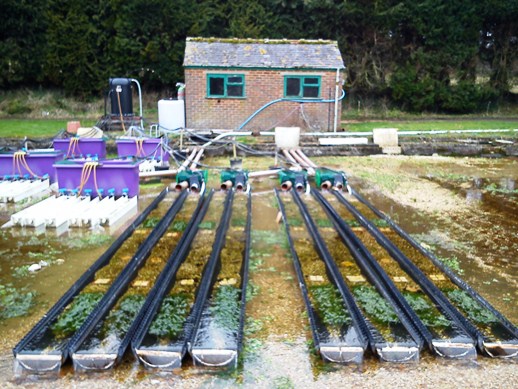The Fobdown Experiment
We have a set of artificial stream experiments set up at a Vitacress farm just outside New Arlesford in Hampshire. The first experiment used three different methane treatments and two different light treatments to look at the effect on the contribution of methane derived carbon to the grazing community. For this first experiment, we used the common cased caddis Agapetus fuscipes as our indicator species.
The second experiment used much longer channels, no light treatments were added and methane was either ambient (almost atmospheric equilibration) or raised (40-200nmol L-1). The channels were seeded with a wide range of chalk stream invertebrates, plants and mosses and they were left open for further natural colonisation. The experiment ran for 12 months.
These experiments are carried out on Vitacress property.








